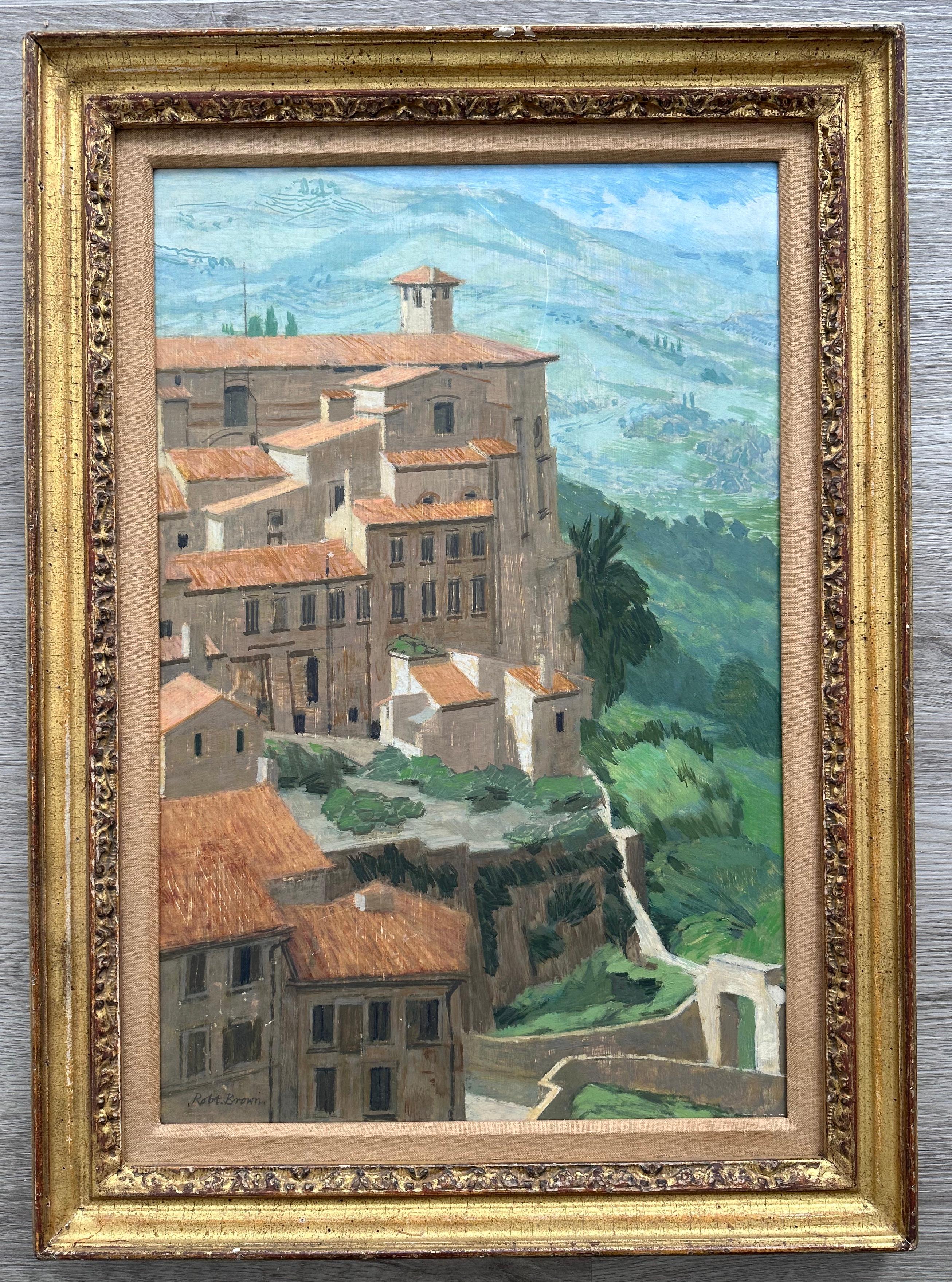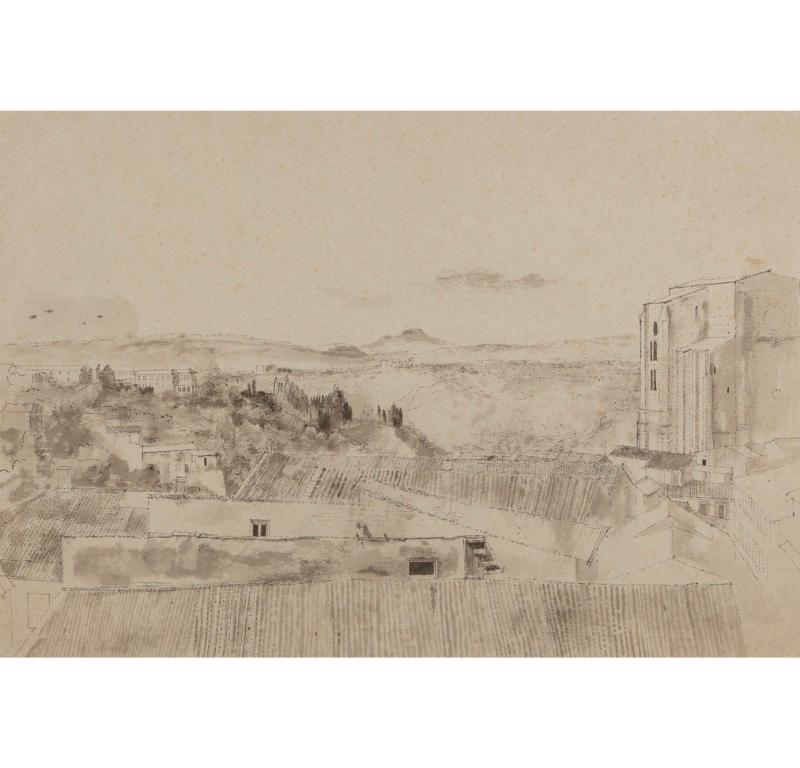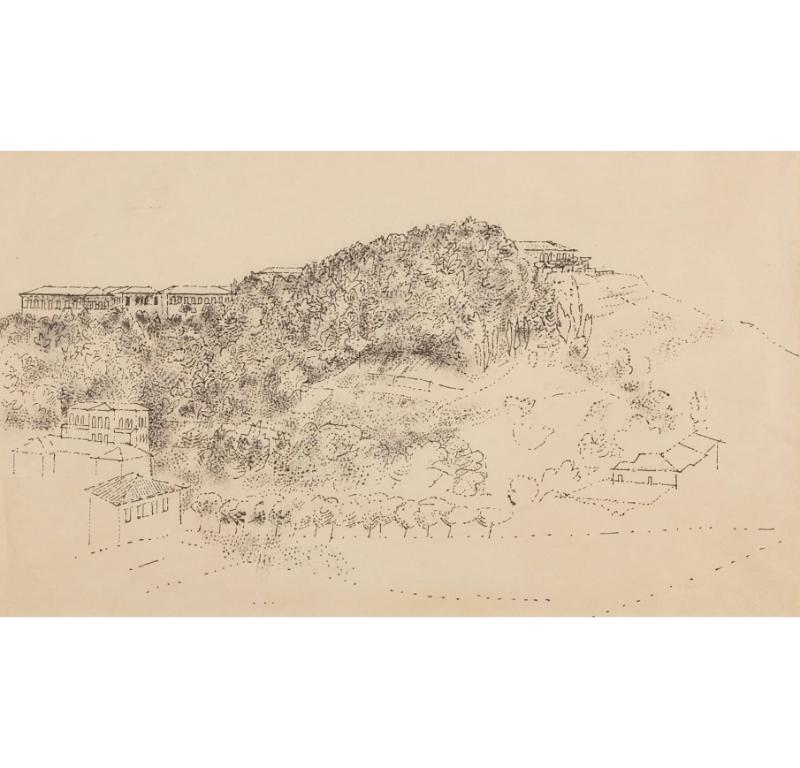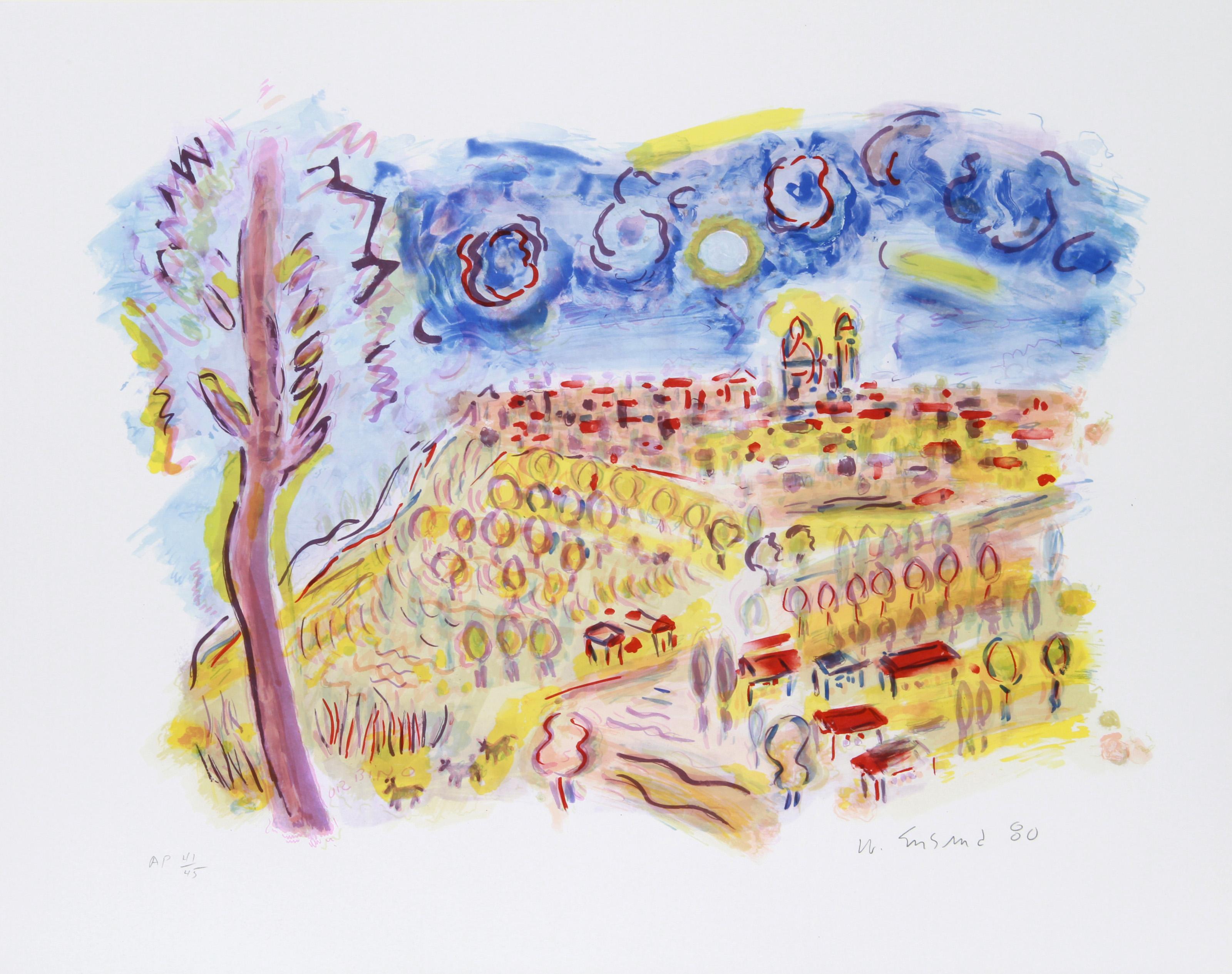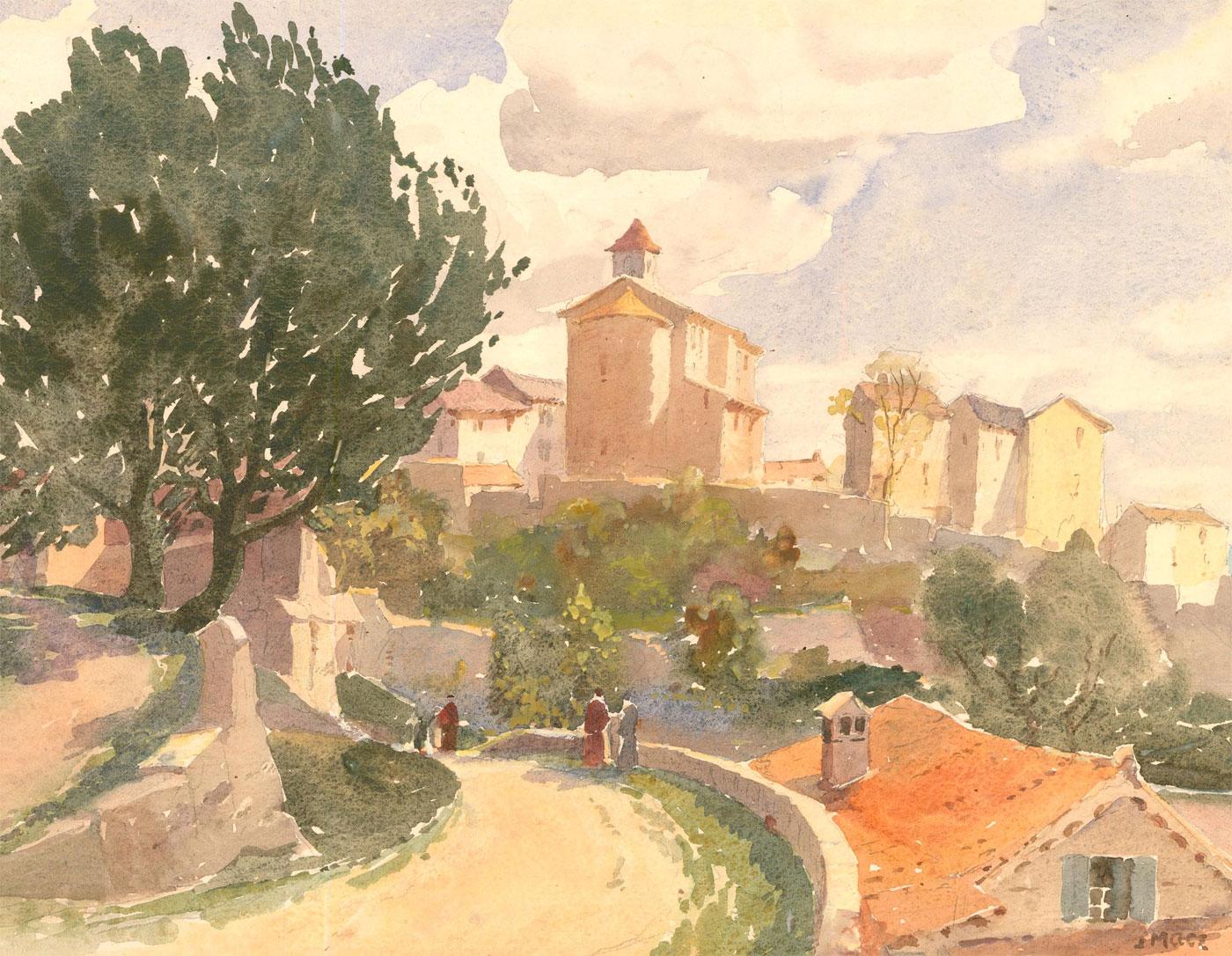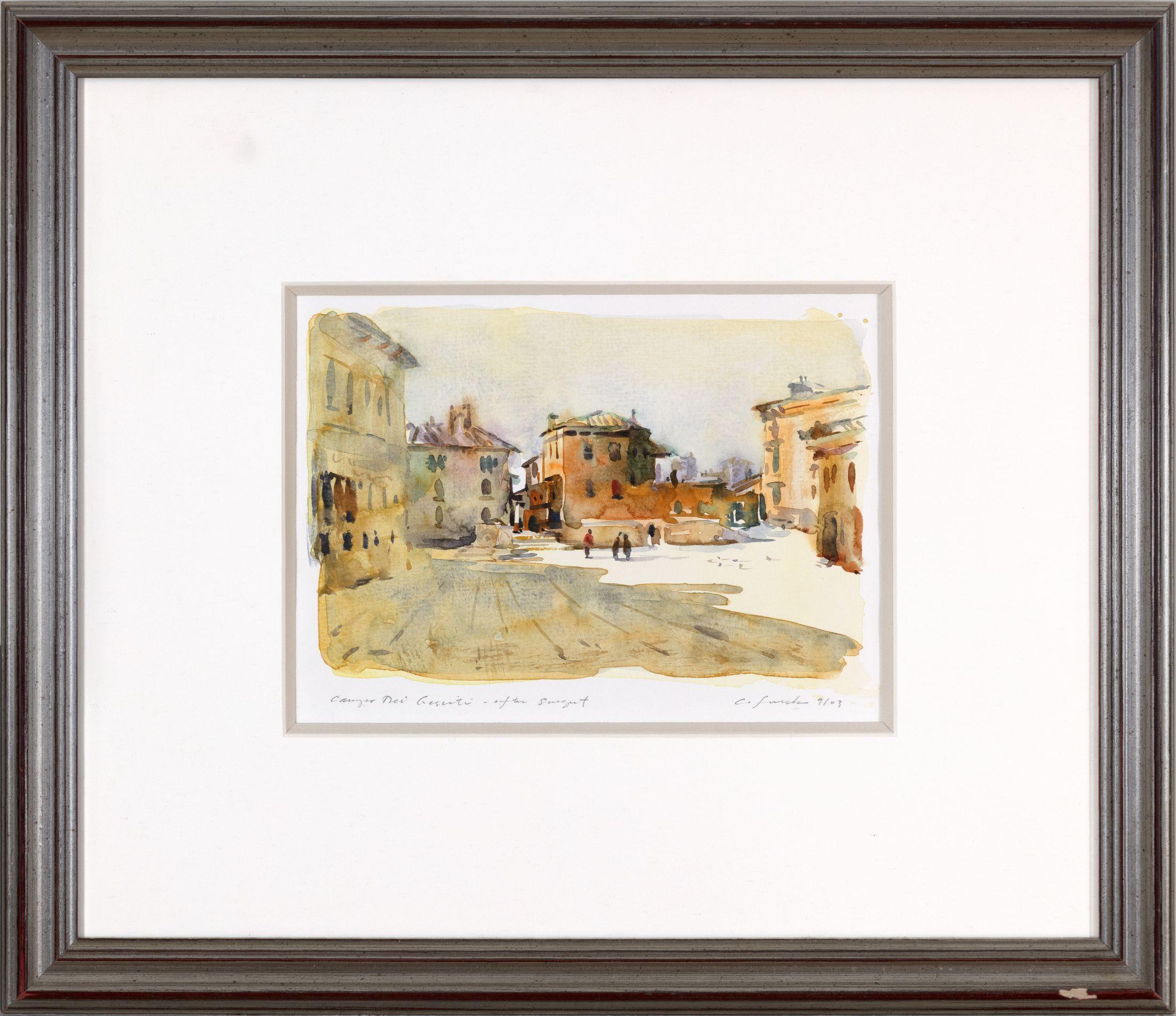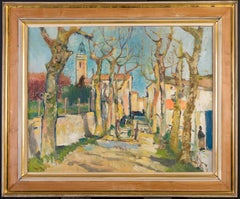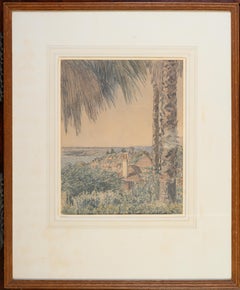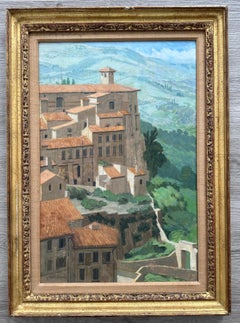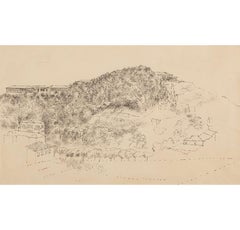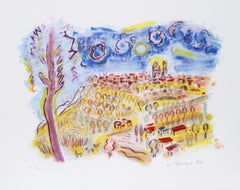Items Similar to Urbino, Italy
Want more images or videos?
Request additional images or videos from the seller
1 of 9
John Arthur Malcolm AldridgeUrbino, Italy1958
1958
$2,069.49
£1,500
€1,769.52
CA$2,846.55
A$3,164.12
CHF 1,658.56
MX$38,641.54
NOK 20,706.20
SEK 19,480.67
DKK 13,207.17
About the Item
John Arthur Malcolm Aldridge R.A. 1905-1983, was an English watercolor and oil painter, designer and art teacher. He visited Northern Italy during the summer holidays for many years, this landscape had been drawn and painted several times over an unknown number of years. Clearly a favorite landscape within easy distance of his accommodation around the area of Urbino. In England he lived in Great Bardfield where several artists lived as a small gathering of fairly distinguished painters all of whom are represented in the Fry Gallery Essex. He was a plein-air painter who would finish his works in the studio as this picture would almost certainly have been.
- Creator:John Arthur Malcolm Aldridge (1905 - 1983, British)
- Creation Year:1958
- Dimensions:Height: 10.75 in (27.31 cm)Width: 14.75 in (37.47 cm)Depth: 1 in (2.54 cm)
- Medium:
- Period:
- Condition:
- Gallery Location:Douglas, GB
- Reference Number:Seller: No. 461stDibs: LU2373215254832
About the Seller
5.0
Vetted Professional Seller
Every seller passes strict standards for authenticity and reliability
1stDibs seller since 2023
17 sales on 1stDibs
Typical response time: 6 hours
- ShippingRetrieving quote...Shipping from: Douglas, United Kingdom
- Return Policy
Authenticity Guarantee
In the unlikely event there’s an issue with an item’s authenticity, contact us within 1 year for a full refund. DetailsMoney-Back Guarantee
If your item is not as described, is damaged in transit, or does not arrive, contact us within 7 days for a full refund. Details24-Hour Cancellation
You have a 24-hour grace period in which to reconsider your purchase, with no questions asked.Vetted Professional Sellers
Our world-class sellers must adhere to strict standards for service and quality, maintaining the integrity of our listings.Price-Match Guarantee
If you find that a seller listed the same item for a lower price elsewhere, we’ll match it.Trusted Global Delivery
Our best-in-class carrier network provides specialized shipping options worldwide, including custom delivery.More From This Seller
View AllPaysage Herault, France.
Located in Douglas, Isle of Man
Ferdinand Alexander Wust 1837-1876, was a Dutch born American painter. Wust learnt to paint from his father Christoffel Wust 1801 -1853, he emigrated to America in the 1850's but ret...
Category
1860s Landscape Paintings
Materials
Canvas, Oil
Lombardian Landscape
Located in Douglas, Isle of Man
Achille Formis Befani 1832-1906, was an Italian painter. He was a talented singer who switched career in his early 30's to become a painter. He trained in Milan and travelled repeate...
Category
Late 19th Century Landscape Paintings
Materials
Oil, Canvas
North African Market
By Hercules Brabazon Brabazon
Located in Douglas, Isle of Man
Hercules Brabazon Brabazon 1821-1906, was an English watercolour painter. He was born Hercules Brabazon Sharpe his father was Hercules Sharpe and his father in-law was Sir Anthony B...
Category
Late 19th Century Landscape Drawings and Watercolors
Materials
Paper, Watercolor, Gouache
Potts Point Sydney Australia
Located in Douglas, Isle of Man
Sydney Ure Smith O.B.E. 1887-1949, was an English born Australian Arts publisher and part time painter, but did not exhibit his own works. He studied pencil and ink drawing at the A...
Category
1930s Landscape Drawings and Watercolors
Materials
Paper, Watercolor
French landscape
By Marcel Dyf
Located in Douglas, Isle of Man
Marcel Dyf 1899-1985, born Marcel Dreyfuss, was a French post impressionist painter who mostly painted landscapes in France, as well as portraits and genre subjects including gypsie...
Category
Early 20th Century Landscape Paintings
Materials
Oil, Board
Summer shade, 1935.
Located in Douglas, Isle of Man
Muriel Elise Cooke, ( Crooke ) 1901 - 1975, was an English artist who painted in watercolour and oil, she was also an engraver Cooke studied in Paris, France and in her twenties exh...
Category
1930s Landscape Drawings and Watercolors
Materials
Paper, Watercolor
You May Also Like
Perugia, Italy Landscape
Located in Wilton Manors, FL
Bobert Brown (British, b.1936). Perugia, Italy. Oil on canvas measures 14.5 x 22 inches; 19.5 x 27 inches framed. Signed lower left. One faint area of scratching on paint surface in ...
Category
1980s Realist Landscape Paintings
Materials
Canvas, Oil
$880 Sale Price
20% Off
Italian Scene, Pen and Ink with Wash Painting by Reginald Brill, 1950s circa
By Reginald Brill
Located in Kingsclere, GB
Italian Scene, Pen and Ink with Wash Painting by Reginald Brill, 1950s circa
Additional information:
Medium: Pen and ink with wash
33 x 48.3 cm
13 x 19 in
Reginald " Reggie" Brill was a versastile 20th century artist and teacher.
Brill was born in London in 1902 and spent his early childhood there and in Yorkshire. By the time of the First World War, at the age of 13, he was living in lodgings in London, working in a City office and attending St Martins School of Art in the evenings. Considering his lack of education, winning a scholarship to The Slade (now part of University College London) in 1921 where he studied under Henry Tonks for three years, was a huge achievement.
On leaving The Slade he found patronage in Lincolnshire, but by the time of the General Strike (1926) he had returned to London and was working on Lansbury's Labour Weekly. He married Rosalie, also an artist, and in 1927 won the Prix de Rome in Decorative Painting. Following two years at The British School in Rome, Brill went to teach at Blackheath School of Art. During 1930 he spent three months painting in Egypt and it was there that he met Col. T G Gayer-Anderson, one of the twin brothers who were to bequeath The Little Hall in Lavenham as a hostel for art students. It was there that Brill retired to act as warden, thus continuing his nurturing of art students until his death in 1972.
Brill took up his appointment at The School of Art, Kingston upon Thames in January 1934. It was situated in the Technical Institute (Kingston Hall Road) and Brill found it bohemian and disorganised. He proceeded to inject enthusiasm, order and discipline. Within 5 years of his appointment a purpose-built School of Art was opened in Knights Park. It remained open throughout the war and by 1945 there was a waiting list for places. Under the skilled and totally dedicated direction of Brill, Kingston School of Art became established with national reputation for excellence. In 1961 Sir Charles Wheeler opened the new building at Knights Park. Costing £100,000, this more than doubled the size of the Art School.
Brill, was a well-known figure in Kingston. His eloquence made him popular as a guest speaker and his promotion of Art and Design stretched well beyond the doors of Knights Park. Apart from establishing two of the main buildings which makeup what is now known as the Faculty of Design, one of the most visible local contributions he made was the setting up of a topographical collection of paintings depicting Kingston, which has since become known as The Brill Collection at Kingston Museum. Brill gained huge respect and admiration from the hundreds of pupils who studied at Kingston during his 30-year leadership.
He published two books, Modern Painting 1946 and Art as a Career 1962, both bearing a strong educational angle. He regularly exhibited along with leading artists of his era at The Royal Academy, both his paintings and his acutely observed drawings. All the while he was a prolific artist, although reading his diaries, intensely self-critical. His perfectionism, acute powers of observation and relentless research can be seen in his drawings, which via the media and methods he explored throughout his life reflect mid 20th century British Art at its most typical. His major series of work, known as 'The Martyrdom of Man', was carried on in parallel to his career as a teacher. These paintings reflect his care for fellow man and depict people at work, e.g., The Operation, The Jury, Linemen, Waiting Room and Rest, which recently sold at Sotheby’s and was specially restored for The Brill Retrospective. His smaller works also play with the theme of everyday events and communication amongst people, such as The Bull Ring and Market Place paintings.
Brill's name is associated particularly with human figure compositions, but he also worked on landscapes, portraits and details of plants, animals, interiors etc. As one would expect he moved from one media to another, and his unusual hand painted and cut paper mosaics...
Category
20th Century Landscape Paintings
Materials
Pen
Italian Landscape, Pen Painting by Reginald Brill, 1950 circa
By Reginald Brill
Located in Kingsclere, GB
Italian Landscape, Pen Painting by Reginald Brill, 1950 circa
Additional information:
Medium: Ink
20 x 34 cm
7 7/8 x 13 3/8 in
Reginald " Reggie" Brill was a versastile 20th century artist and teacher.
Brill was born in London in 1902 and spent his early childhood there and in Yorkshire. By the time of the First World War, at the age of 13, he was living in lodgings in London, working in a City office and attending St Martins School of Art in the evenings. Considering his lack of education, winning a scholarship to The Slade (now part of University College London) in 1921 where he studied under Henry Tonks for three years, was a huge achievement.
On leaving The Slade he found patronage in Lincolnshire, but by the time of the General Strike (1926) he had returned to London and was working on Lansbury's Labour Weekly. He married Rosalie, also an artist, and in 1927 won the Prix de Rome in Decorative Painting. Following two years at The British School in Rome, Brill went to teach at Blackheath School of Art. During 1930 he spent three months painting in Egypt and it was there that he met Col. T G Gayer-Anderson, one of the twin brothers who were to bequeath The Little Hall in Lavenham as a hostel for art students. It was there that Brill retired to act as warden, thus continuing his nurturing of art students until his death in 1972.
Brill took up his appointment at The School of Art, Kingston upon Thames in January 1934. It was situated in the Technical Institute (Kingston Hall Road) and Brill found it bohemian and disorganised. He proceeded to inject enthusiasm, order and discipline. Within 5 years of his appointment a purpose-built School of Art was opened in Knights Park. It remained open throughout the war and by 1945 there was a waiting list for places. Under the skilled and totally dedicated direction of Brill, Kingston School of Art became established with national reputation for excellence. In 1961 Sir Charles Wheeler opened the new building at Knights Park. Costing £100,000, this more than doubled the size of the Art School.
Brill, was a well-known figure in Kingston. His eloquence made him popular as a guest speaker and his promotion of Art and Design stretched well beyond the doors of Knights Park. Apart from establishing two of the main buildings which makeup what is now known as the Faculty of Design, one of the most visible local contributions he made was the setting up of a topographical collection of paintings depicting Kingston, which has since become known as The Brill Collection at Kingston Museum. Brill gained huge respect and admiration from the hundreds of pupils who studied at Kingston during his 30-year leadership.
He published two books, Modern Painting 1946 and Art as a Career 1962, both bearing a strong educational angle. He regularly exhibited along with leading artists of his era at The Royal Academy, both his paintings and his acutely observed drawings. All the while he was a prolific artist, although reading his diaries, intensely self-critical. His perfectionism, acute powers of observation and relentless research can be seen in his drawings, which via the media and methods he explored throughout his life reflect mid 20th century British Art at its most typical. His major series of work, known as 'The Martyrdom of Man', was carried on in parallel to his career as a teacher. These paintings reflect his care for fellow man and depict people at work, e.g., The Operation, The Jury, Linemen, Waiting Room and Rest, which recently sold at Sotheby’s and was specially restored for The Brill Retrospective. His smaller works also play with the theme of everyday events and communication amongst people, such as The Bull Ring and Market Place paintings.
Brill's name is associated particularly with human figure compositions, but he also worked on landscapes, portraits and details of plants, animals, interiors etc. As one would expect he moved from one media to another, and his unusual hand painted and cut paper mosaics...
Category
20th Century Landscape Paintings
Materials
Pen
Urbino, Impressionist Lithograph by Wayne Ensrud
By Wayne Ensrud
Located in Long Island City, NY
Wayne Ensrud, American (1934 - ) - Urbino, Year: 1980, Medium: Lithograph, signed and numbered in pencil, Edition: 300, AP 45, Image Size: 17 x 23 inches, Size: 21 in. x 27 in. ...
Category
1980s Impressionist Landscape Prints
Materials
Lithograph
John Mace RBA (1889-1952) - Early 20th Century Watercolour, Italian Village
Located in Corsham, GB
A serene and delicate study of an Italian village bathed in afternoon sunlight. Several figures walk down a cobbled path that is partially shaded by two old trees. Signed to the righ...
Category
20th Century Landscape Drawings and Watercolors
Materials
Watercolor
"Campo Dei Gesuiti After Sargent" Original watercolor signed by Craig Lueck
By Craig Lueck
Located in Milwaukee, WI
"Campo Dei Gesuiti After Sargent" is an original watercolor on Holbein watercolor paper by Craig Lueck. These petite watercolors that make up Lueck's por...
Category
Early 2000s Contemporary Landscape Drawings and Watercolors
Materials
Watercolor
More Ways To Browse
Italian Painters 1950
Small Italian Picture Frames
John Aldridge
Siena Painting
Pencil Drawings Still Life
Watercolors Of Venice
Black And White Pencil Drawing
Female Nude Watercolor Paintings
Mid Century Drawings Figure
Vintage Chinese Watercolor
Antique Line Drawings
Pair Of Watercolors
Signed Val
Painting Siena Italy
Antique Flower Drawing
Paris Fashion Drawing
Native American Watercolor
Vintage Watercolor
